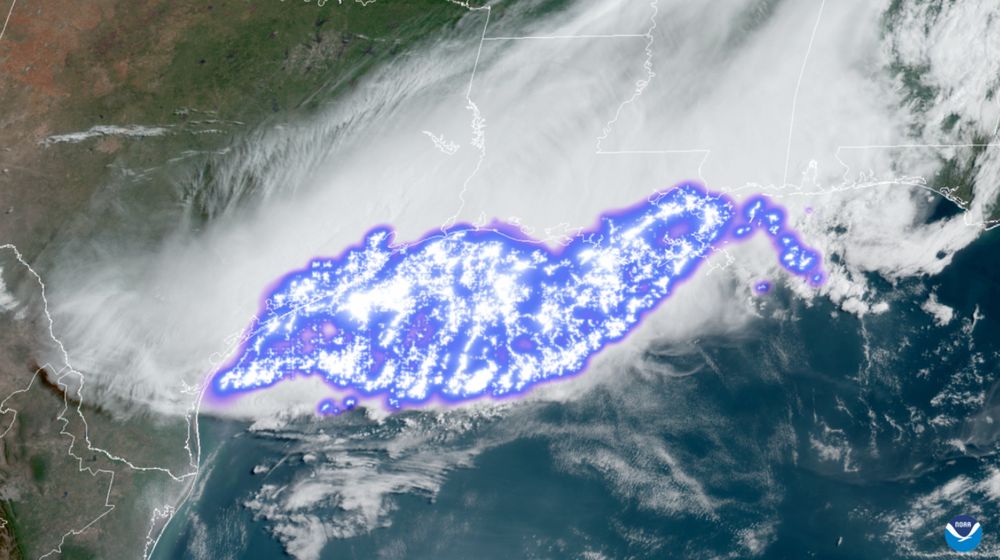How far can a lightning bolt travel? Awfully far, as revealed by the World Meteorological Organization recently.
In a press release published on February 1, 2022, the WMO certifies that they have a new record-holder. A notoriously long flash of lightning stretching 477 miles across three states in southern US was observed by a NOAA satellite during a storm in April 29, 2020. I have no idea why it took almost two years to recognize that. Perhaps no body looked at the data until recently. Anyways, this lightning bolt, referred to as a “megaflash” stretched from the central coast of Texas to southern Mississippi, traveling over southern Louisiana. The distance is equivalent to that between New York City and Columbus, Ohio, in the United States or between London and the German city of Hamburg.
The 477-mile lightning bolt.
The previous record for the longest lightning bolt was another megaflash 440 miles long that was observed across parts of southern Brazil on 31 October 2018.
In the same press release, the WMO mentions another record, that for the greatest duration for a single lightning flash, clocked at 17.1 seconds. That flash developed continuously through a thunderstorm over Uruguay and northern Argentina on 18 June 2020. The previous record was 16.73 seconds, or 0.37 seconds shorter than the new record, and was recorded in a flash that developed continuously over northern Argentina on 4 March 2019. According to the WMO, both records took place in areas prone to intense storms, called Mesoscale Convective System (MCS) thunderstorms, whose dynamics permit extraordinary megaflashes to occur. These include the Great Plains in North America, and the La Plata basin in South America.
Geographic locations and extents (red lines) of the longest duration lightning megaflash (left) and the longest distance lightning megaflash (right).
“These are extraordinary records from single lightning flash events. Environmental extremes are living measurements of the power of nature, as well as scientific progress in being able to make such assessments. It is likely that even greater extremes still exist, and that we will be able to observe them as lightning detection technology improves,” said Professor Randall Cerveny, rapporteur of Weather and Climate Extremes for WMO.
“Lightning is a major hazard that claims many lives every year. The findings highlight important public lightning safety concerns for electrified clouds where flashes can travel extremely large distances,” said WMO Secretary-General Prof. Petteri Taalas.
The way the WMO observes and measures lightning has changed over the years. Previously, data was collected by ground-based instruments known as Lightning Mapping Array. But these instruments were limited to how far they were able to see. Megaflashes such as those recorded during Mesoscale Convective Systems can only be detected using space-based lightning detectors. These new instruments include the Geostationary Lightning Mappers (GLMs) on GOES-16 and GOES-17 satellites which are operated by NASA and the National Oceanic and Atmospheric Administration.
“Now that we have a robust record of these monster flashes, we can begin to understand how they occur and appreciate the disproportionate impact that they have,” said Michael J. Peterson, of the Space and Remote Sensing Group (ISR-2) of Los Alamos National Laboratory, USA.














Comments
Post a Comment